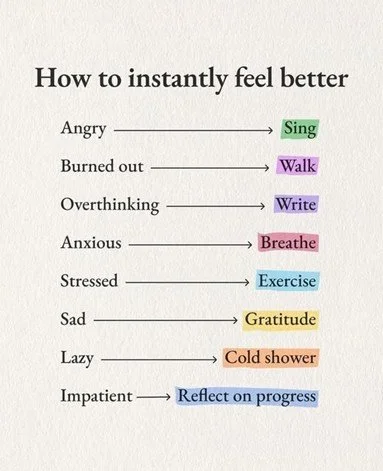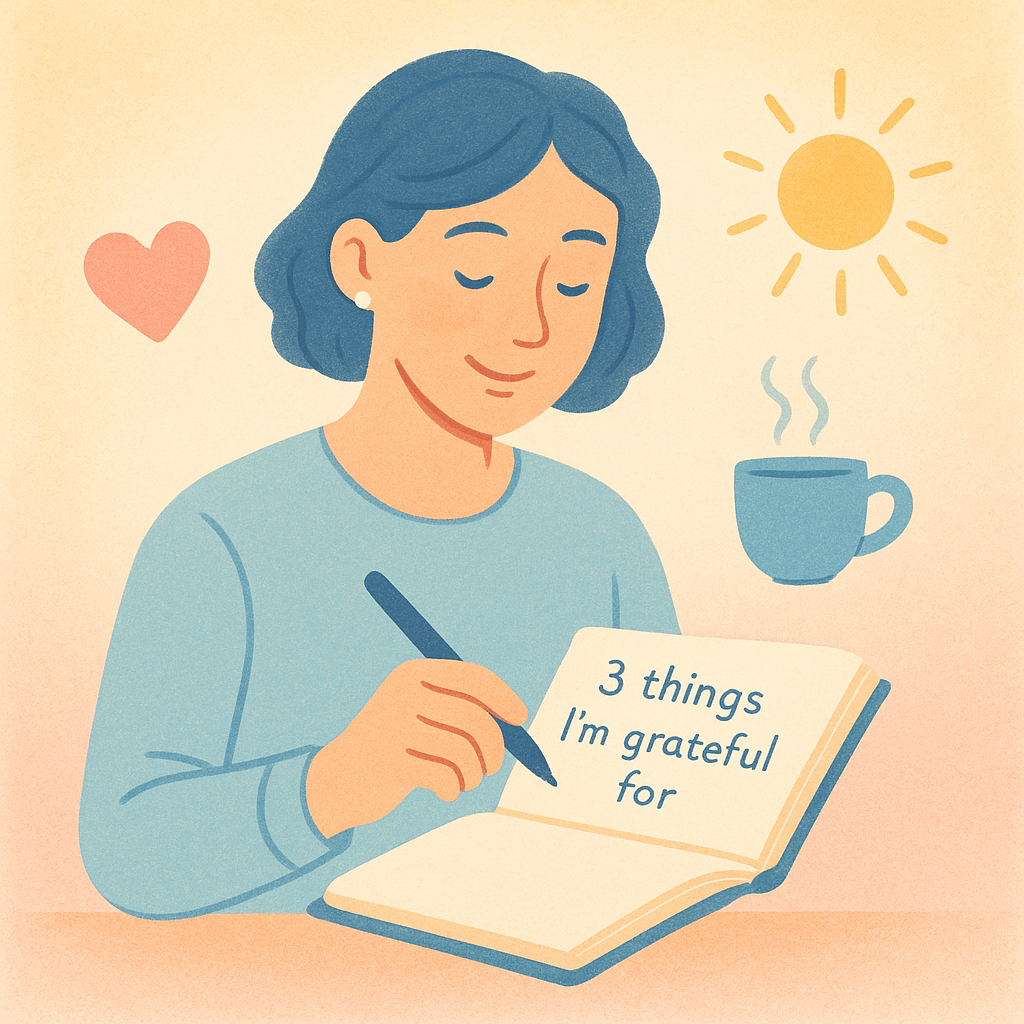Mastering Your State: 8 Practical Ways to Instantly Shift Your Emotions at Work
The modern workplace is a relentless flood of demands. A challenging project, a difficult conversation, an overflowing inbox; any one of these can hijack your emotional state, turning a productive afternoon into a struggle against frustration, anxiety, or burnout.
We talk a lot about managing our time, but one of the most critical skills for professional success is learning to manage our emotions. The ability to consciously shift your state is not a "soft skill", it is an essential tool for resilience, focus, and sustainable high performance.
This article provides a practical toolkit of eight simple, science-backed techniques to help you practice emotional regulation at work, based on the powerful idea that a simple action can create an instant shift.
The Toolkit: 8 Simple Actions for an Immediate Emotional Shift
1. When You Feel ANGRY... SING
It may sound silly, but singing, even humming a tune quietly, forces you to control your breath. This stimulates the vagal nerve, which helps calm your body's fight-or-flight response. The vibration and melody can also provide a powerful distraction, breaking the mental loop of anger.
When you feel angry…SING
2. When You Feel BURNED OUT... WALK
Burnout is a state of profound exhaustion and mental fatigue. A short, brisk walk physically removes you from the source of your stress. The rhythmic, bilateral movement (left, right, left, right) can help process overwhelming thoughts and emotions; a change of scenery provides a much-needed mental reset.
3. When You're OVERTHINKING... WRITE
Overthinking is like having too many tabs open in your brain; it slows everything down. The act of writing your thoughts down is a form of cognitive "offloading". It gets the looping ideas out of your head and onto a page, creating distance and allowing you to see them with more clarity and objectivity.
4. When You Feel ANXIOUS... BREATHE
This is the most direct and powerful tool. When you feel anxious, your breathing becomes shallow and rapid. Intentionally slowing it down with a simple "box breathing" technique (inhale for 4 seconds, hold for 4, exhale for 4, hold for 4) directly activates your parasympathetic nervous system, telling your body it is safe to relax.
5. When You Feel STRESSED... EXERCISE
Stress floods your body with hormones like cortisol and adrenaline. A short burst of intense exercise, like a few flights of stairs, jumping jacks, or push-ups, is one of the fastest ways to metabolize these hormones. It also releases endorphins, which act as natural mood elevators.
6. When You Feel SAD... PRACTICE GRATITUDE
Sadness often narrows our focus onto what is wrong or what we have lost. Actively practicing gratitude forces a cognitive shift. Take 60 seconds to write down or simply think of three specific things you are grateful for. This practice is proven to redirect neural pathways and lift your mood by focusing on positive inputs.
7. When You Feel LAZY (or Unmotivated)... TAKE A COLD SHOWER
While not always practical in an office, the principle of a "pattern interrupt" is key. A jolt of cold water triggers a rush of norepinephrine, a hormone and neurotransmitter that dramatically increases alertness, focus, and energy. If a shower isn't an option, splashing cold water on your face can have a similar, milder effect.
8. When You Feel IMPATIENT... REFLECT ON PROGRESS
Impatience often stems from focusing exclusively on the gap between where you are and where you want to be. Counter this by taking a moment to look backward; acknowledge the progress you've already made. This "progress principle" provides a dopamine hit that renews motivation and reframes the journey.
When you feel impatient…
REFLECT ON PROGRESS
From Individual Tactics to Organizational Health
These individual tools are incredibly powerful for in-the-moment relief, and they are essential skills for workplace well-being.
But leaders must ask a deeper question: What if your people need to use these coping mechanisms every single day?
If your workplace is chronically causing anger, anxiety, and burnout, then breathing exercises and gratitude journals are not a solution; they are a temporary fix for a systemic problem. A truly healthy organization doesn't just equip its people with tools to cope with stress; it actively works to remove the sources of that stress.
To build a truly resilient organization, leaders must move from treating the symptoms to diagnosing the cause.
This is the core purpose of the Quintaum diagnostic. We help you look beyond the surface and understand the Dominant Emotions at Work across your entire organization. Our platform identifies the systemic Burnout Stressors, such as unmanageable workloads, a lack of leadership support, or poor work-life balance, that are creating these negative states in the first place.
Our data allows you to shift from providing coping mechanisms to building an environment where fewer coping mechanisms are needed.
Build a Culture That Breathes Easier
Empower your people with the tools to manage their emotions, and empower your organization with the data to build a healthier culture where they can thrive.






